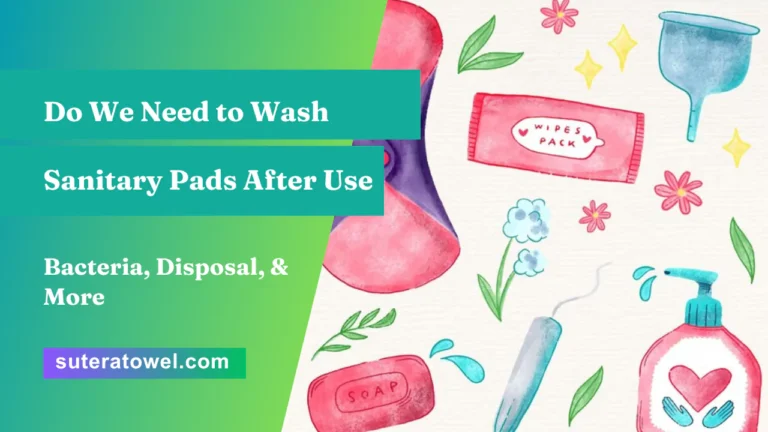No, it is not necessary to wash sanitary pads after use. Sanitary pads are disposable and should be thrown away after use to maintain proper hygiene.
Sanitary pads are an essential part of a woman’s menstrual care routine. They provide comfort and help absorb the menstrual flow during periods. However, there are often questions about whether it is necessary to wash sanitary pads after use. The answer is simple: no, it is not necessary.
Sanitary pads are designed to be disposable and should be thrown away after use. Washing them can be unhygienic and may not effectively remove all bacteria and odor. Instead, women should focus on proper disposal methods to maintain personal hygiene during their menstrual cycle. We will explore the importance of disposable sanitary pads and provide tips for their proper use and disposal.
- 1 The Potential Risks Of Unhygienic Practices
- 2 The Truth About Washing Sanitary Pads
- 3 The Right Way To Dispose Of Used Sanitary Pads
- 4 Myth 1: Washing Provides Better Hygiene
- 5 Myth 2: Washing Prevents Unpleasant Odor
- 6 Myth 3: Washing Extends The Lifespan Of Sanitary Pads
- 7 Proper Handling And Storage Of Used Pads
- 8 Choosing The Right Sanitary Pad For Optimal Hygiene
- 9 Alternative Menstrual Hygiene Products
- 10 Frequently Asked Questions Of Do We Need To Wash Sanitary Pads After Use
- 11 Conclusion
The Potential Risks Of Unhygienic Practices

Unhygienic practices in not washing sanitary pads after use can pose potential risks. Proper hygiene is essential to prevent infections and maintain overall health.
Bacterial Growth And Infections:
- Using sanitary pads that are not washed after use can lead to bacterial growth and increase the risk of infections.
- Bacteria thrive in warm and moist environments, which can be created when sanitary pads are not properly cleaned.
- Unhygienic practices can result in a build-up of bacteria, leading to urinary tract infections (UTIs) and vaginal infections.
- Regular washing and proper disposal of used sanitary pads can help eliminate these risks.
Skin Irritation And Rashes:
- Unwashed sanitary pads can cause skin irritation and rashes due to the presence of bacteria and moisture.
- When the pad is not cleaned, the bacteria that accumulate on it may come into contact with the skin, causing inflammation and discomfort.
- Rashes can be itchy and painful, making it uncomfortable to wear sanitary pads and potentially causing additional irritation to the skin.
- By ensuring proper washing or disposal of used pads, you can reduce the risk of skin irritation and rashes.
Foul Odor And Discomfort:
- Not washing used sanitary pads can result in a foul odor, making it uncomfortable for the individual using them.
- Bacteria present on the unwashed pad can produce gases and release unpleasant smells.
- The odor can cause embarrassment and self-consciousness in social situations, negatively impacting a person’s confidence.
- By maintaining hygiene and regularly washing or disposing of used sanitary pads, one can prevent foul odors and experience greater comfort during menstruation.
The Truth About Washing Sanitary Pads
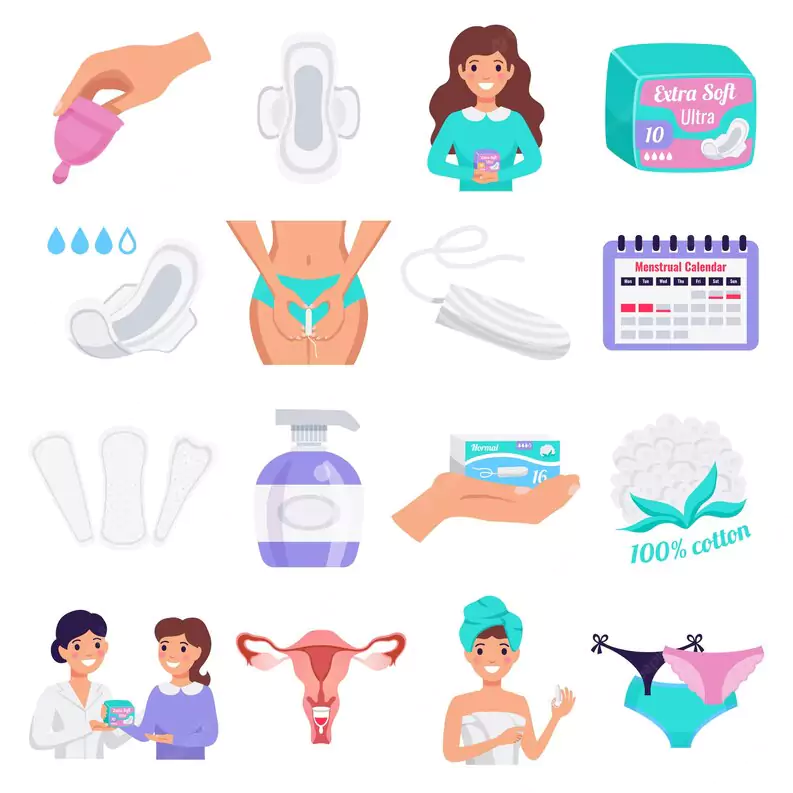
Cleaning sanitary pads after use is a topic surrounded by confusion. However, it is not necessary to wash disposable pads. Simply dispose of them properly to maintain hygiene and comfort during menstruation.
Have you ever wondered whether you need to wash your sanitary pads after use? This common question often leaves women perplexed and unsure about the best course of action. In this blog post, we will explore the need for washing sanitary pads and dissect the common misconception surrounding this topic.
Exploring The Need For Washing
- Proper hygiene practices: It is essential to maintain proper hygiene during menstruation to prevent infections and maintain vaginal health. Washing your sanitary pads after use helps maintain cleanliness and ensures a fresher experience during your menstrual cycle.
- Blood stains and odors: Menstrual blood can leave stains on the pad and emit unpleasant odors if not properly washed. Regularly cleaning your sanitary pads eliminates these concerns and helps maintain their effectiveness.
- Extended pad lifespan: By washing your sanitary pads, you can extend their lifespan. Proper cleaning and care can help preserve the absorbency and functionality of the pads, allowing you to reuse them for longer durations.
Dissecting The Common Misconception
- Disposable vs. Reusable pads: When it comes to disposable pads, the need for washing does not arise as they are designed for single use only. However, for reusable pads, proper washing is necessary to ensure hygiene and longevity.
- Preventing bacterial growth: Failure to wash reusable sanitary pads can lead to the growth of bacteria, which can pose health risks. Washing the pads after use helps eliminate any bacteria present and maintains a hygienic environment.
- Quality and comfort: Regular washing not only keeps your sanitary pads clean but also enhances their quality and comfort. Stains and residue can impact the overall performance of the pad, while proper cleaning ensures optimal functionality.
Washing your sanitary pads after use is crucial for maintaining personal hygiene, preventing bacterial growth, and ensuring the longevity of reusable pads. By following proper washing techniques and caring for your pads, you can enjoy a clean and comfortable menstrual experience.
The Right Way To Dispose Of Used Sanitary Pads
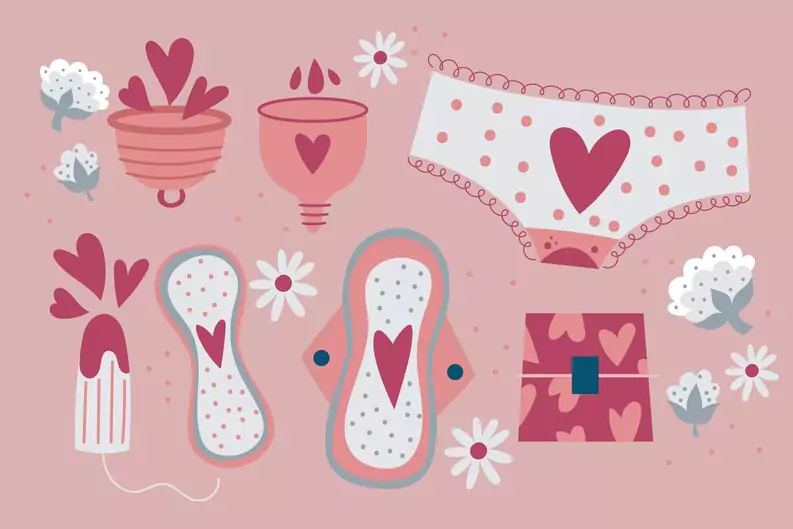
Used sanitary pads should be disposed of properly, but there is no need to wash them after use. Simply wrap them in a plastic bag and throw them in the garbage bin to maintain hygiene and minimize environmental impact.
If you use sanitary pads during your period, it’s important to know how to dispose of them properly. Improper disposal can contribute to environmental pollution and pose health risks. In this section, we will discuss the right way to dispose of used sanitary pads, including environmental considerations, proper disposal methods, and alternatives.
Environmental Considerations:
When it comes to using sanitary pads, it’s crucial to consider the impact on the environment. Here are some key factors to keep in mind:
- Plastic waste: Sanitary pads are typically made with a combination of plastic, cotton, and other materials. The plastic components can take hundreds of years to decompose, contributing to the global plastic waste problem.
- Pollution: Improper disposal of sanitary pads can lead to pollution in water bodies and landfills. The chemicals and contaminants present in these products can seep into the soil and water, harming the environment and wildlife.
- Energy consumption: The production, transportation, and disposal of sanitary pads consume significant amounts of energy, adding to the carbon footprint and environmental impact.
Proper Disposal Methods And Alternatives:
To minimize the environmental impact of sanitary pad disposal, here are some guidelines and alternatives to consider:
- Wrap it up: After use, wrap the used sanitary pad in toilet paper or place it inside a disposal bag. This helps contain any potential odor and prevents the pad from coming into contact with the environment.
- Dispose of the garbage: Place the wrapped sanitary pad in a trash bin with a secure lid. This ensures that it is properly contained and doesn’t litter the surroundings.
- Biodegradable options: Look for biodegradable sanitary pad options as an alternative. These pads are made from organic materials that break down over time, reducing the environmental impact significantly.
- Menstrual cups: Consider using menstrual cups as a more sustainable alternative to sanitary pads. Menstrual cups are reusable, making them an eco-friendly and cost-effective solution.
- Cloth pads: Another eco-friendly option is reusable cloth pads. These pads can be washed and reused, reducing waste and minimizing the environmental impact.
By following these proper disposal methods and considering alternatives, you can contribute to a cleaner environment while managing your menstrual hygiene effectively.
Remember, taking care of your own well-being and the environment go hand in hand. Together, we can make a positive impact and create a more sustainable future.
Myth 1: Washing Provides Better Hygiene
Washing sanitary pads after use is a common myth for better hygiene. However, this is not necessary as disposable pads are designed to be used and thrown away.
Exploring The Logic Behind The Belief:
- Many individuals believe that washing sanitary pads after use provides better hygiene.
- The belief stems from the assumption that washing can eliminate all bacteria and ensure cleanliness.
- People may also think that washing can prevent odors or infections.
Dispelling The Myth With Scientific Evidence:
- While washing pads may give a feeling of cleanliness, it may not necessarily provide better hygiene.
- Sanitary pads are designed to absorb menstrual fluid and maintain a dry and clean environment.
- Washing pads can potentially damage the delicate fibers, structure, and absorbency of the pad.
- Research indicates that washing cloth pads improperly or with low-quality materials may leave residue or bacteria behind.
- Proper cleaning and sterilization techniques, such as boiling or using hot water, can be time-consuming and may require additional resources.
The belief that washing sanitary pads after use provides better hygiene is not supported by scientific evidence. Sanitary pads are designed to provide adequate protection and cleanliness during menstruation. Using quality disposable pads or following proper cleaning methods for cloth pads can ensure optimal hygiene.
Myth 2: Washing Prevents Unpleasant Odor
Washing sanitary pads after use is a common myth to prevent unpleasant odors. However, it is not necessary as most pads are designed with odor-lock technology and can be disposed of hygienically.
Investigating The Connection Between Washing And Odor Prevention
Are you tired of dealing with unpleasant odors when it comes to using sanitary pads? There’s a common myth that washing your pads after use can prevent these embarrassing smells. Let’s take a closer look at whether this is actually true and understand the factors that contribute to odor.
Factors Contributing To Odor:
- Bacterial growth: Sanitary pads provide a warm and moist environment that can promote the growth of bacteria. When exposed to air, these bacteria can result in odor.
- Menstrual blood: The pH of menstrual blood can also contribute to the development of odors. As blood comes into contact with air, it may undergo a process called oxidation, which leads to a change in odor.
- Long usage: Wearing the same pad for an extended period of time can increase the chances of odor. The longer the pad remains saturated with blood, the more likely it is to produce an unpleasant smell.
- Poor disposal: Improper disposal of used pads can contribute to odor. If pads are not disposed of properly or are left in an unsealed garbage bin, the accumulated blood can emit a foul smell.
While washing your sanitary pads may seem like a logical solution to prevent unpleasant odors, it may not be the most effective approach. Understanding the factors contributing to odor can help you make informed decisions about hygiene practices. Remember, it’s important to prioritize proper pad usage, disposal, and overall hygiene to maintain freshness and prevent odor.
Myth 3: Washing Extends The Lifespan Of Sanitary Pads
Washing does not extend the lifespan of sanitary pads. They are designed for single use and should be disposed of properly after use.
Curiosity regarding the durability of sanitary pads often leads to debates about whether washing can extend their lifespan. Let’s delve into this myth by analyzing the effect of washing on pad durability and discussing other factors that impact their longevity.
Analyzing The Effect Of Washing On Pad Durability
When it comes to the durability of sanitary pads, some believe that washing them after use can prolong their lifespan. However, it is important to separate fact from fiction. Here’s what you need to know:
- Frequent washing: While it’s essential to maintain good hygiene and clean your pads, excessive washing can actually lead to wear and tear. Washing pads too frequently can cause the fabric to degrade and lose its absorbency over time.
- Aggressive washing methods: Vigorous rubbing, using harsh detergents, or subjecting pads to high temperatures during washing can weaken the fibers. This can significantly reduce their durability and affect their overall performance.
- Fabric quality: The lifespan of a sanitary pad is heavily dependent on the quality of the fabric used. Some pads are designed to withstand multiple washes, while others may deteriorate more quickly. It’s important to choose pads made from durable materials.
- Incorrect drying techniques: Improper drying methods, such as excessive heat or direct sunlight, can also impact the longevity of sanitary pads. Proper air drying or using low-temperature settings on your dryer are recommended to help preserve their durability.
Discussing Other Factors That Impact Pad Lifespan
While washing does play a role in the lifespan of sanitary pads, it is not the sole determining factor. Several other factors contribute to the overall durability and effectiveness of pads. Consider the following:
- Absorbency level: Pads with higher absorbency levels tend to have a shorter lifespan as they need to withstand more fluid absorption. It’s important to choose pads that match your flow requirements to ensure optimal performance.
- Frequency of use: The more frequently you use a pad, the quicker it will wear out. Pads designed for heavy flows may need to be replaced more often than those for lighter flows.
- Storage method: Proper storage is crucial to maintaining the integrity of sanitary pads. Storing them in a cool, dry place and away from direct sunlight can help prevent premature deterioration.
- Quality control: It’s essential to purchase sanitary pads from reputable brands that adhere to quality control measures. Ensuring that the pads are made from high-quality materials can significantly impact their lifespan.
While washing is necessary to maintain hygiene, excessive washing, and improper care can reduce the durability of sanitary pads. To extend their lifespan, it’s crucial to follow proper washing and drying techniques, choose pads made from durable materials, and consider other factors such as absorbency level and storage methods.
By understanding these factors, you can make informed choices and keep your sanitary pads in good condition for the duration of your menstrual cycle.
Proper Handling And Storage Of Used Pads
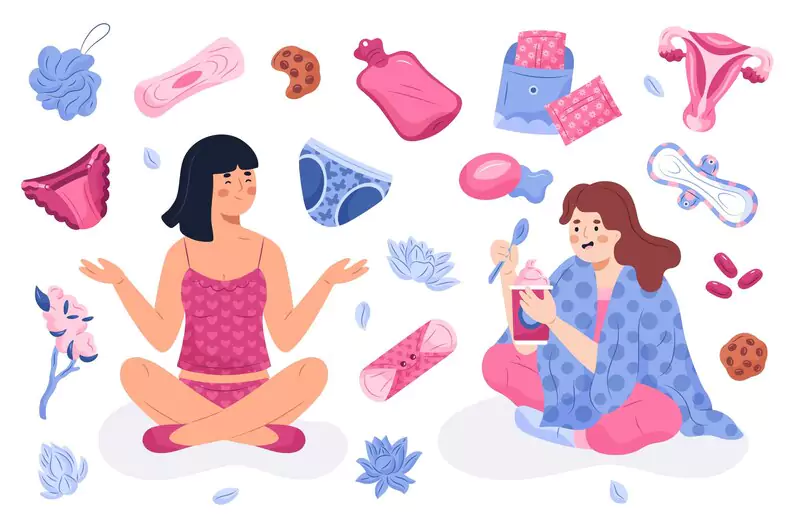
Proper handling and storage of used pads is crucial for maintaining hygiene. While washing sanitary pads after use is not necessary, it is important to dispose of them properly in sealed bags or bins to prevent odors and potential contamination.
It’s essential to practice proper handling and storage of used sanitary pads to ensure hygiene and minimize any potential odor. Here are some tips and discreet disposal options to consider:
Discreet Disposal Options:
- Wrap it up: After use, carefully wrap the used pad in a tissue or toilet paper to contain any potential leaks or odors. This will help maintain discretion while disposing of it.
- Sanitary disposal bags: Consider using special sanitary disposal bags that are designed to seal in odors and prevent any leakage from the used pad. These bags are readily available and can be discreetly carried in your bag or purse.
- Scented disposal bags: If you prefer an extra level of odor control, scented disposal bags are a great option. These bags are infused with pleasant fragrances that help mask any unwanted smells.
Tips For Maintaining Freshness Until Disposal:
- Frequent changes: It’s important to change your sanitary pad regularly to maintain freshness and prevent any discomfort. The general recommendation is to change pads every 4-6 hours, or more often if necessary.
- Proper storage: When not near a disposal option, it’s vital to store used pads properly to prevent any unpleasant odors. Consider using a small zip-lock bag or airtight container to seal in the odor until you can dispose of it discreetly.
- Avoid flushing: Sanitary pads should never be flushed down the toilet as they can cause blockages in the plumbing system. Always dispose of them in the appropriate trash receptacle.
- Household trash: If you don’t have access to specialized disposal bags, wrapping the used pad in multiple layers of tissue or toilet paper and disposing of it in the regular household trash can be an alternative.
Remember, proper handling and disposal of used pads not only ensures cleanliness and hygiene but also contributes to personal comfort and peace of mind. By following these tips, you can discreetly manage your used pads until you can properly dispose of them.
Choosing The Right Sanitary Pad For Optimal Hygiene
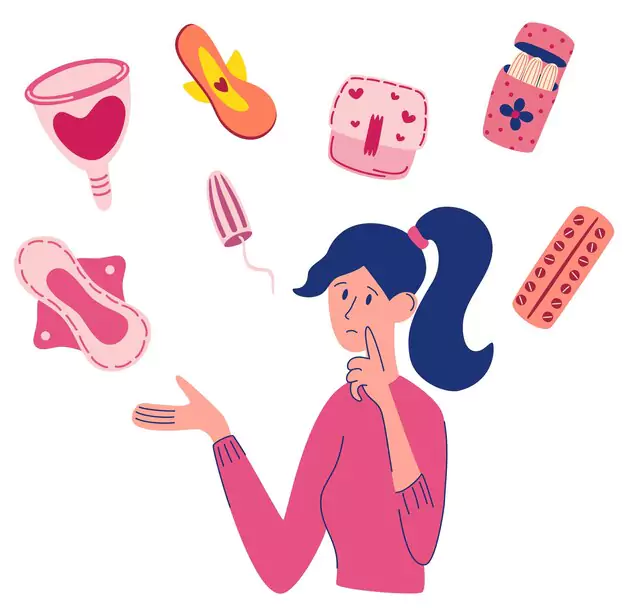
Choosing the right sanitary pad for optimal hygiene is crucial, but do we need to wash them after use? This article delves into the importance of maintaining personal hygiene and the proper disposal of sanitary pads.
When it comes to menstrual hygiene, choosing the right sanitary pad is crucial. The right choice ensures optimal hygiene and comfort during those days of the month. But with so many options available, how do you know which one is best for you?
Let’s explore the factors to consider when selecting a sanitary pad to ensure you make an informed decision.
Considerations For Material And Absorbency
When it comes to sanitary pads, there are two main considerations: the material used and the absorbency level. Here are some points to keep in mind when evaluating these factors:
- Materials: Sanitary pads are typically made of cotton, synthetic materials, or a combination of both. Consider the following:
- Cotton: 100% cotton pads are a natural choice as they are breathable, hypoallergenic, and less likely to cause irritation.
- Synthetic materials: Pads with synthetic materials may offer added leak protection due to their moisture-wicking properties. However, they may not be as breathable as cotton pads.
- Combination: Some pads combine both cotton and synthetic materials, offering the benefits of both.
- Absorbency levels: The absorbency level of a sanitary pad determines how much menstrual flow it can hold. Consider the following:
- Light flow: If you have a light flow, opt for pads with lighter absorbency. They are thinner, more comfortable, and provide sufficient protection.
- Medium flow: For a medium flow, pads with moderate absorbency are suitable. They strike a balance between thickness and absorbency.
- Heavy flow: If you have a heavy flow, choose pads with higher absorbency. These pads are thicker and designed to hold a larger volume of menstrual flow.
Remember to select the right combination of material and absorbency level that caters to your individual needs. This ensures optimal hygiene, comfort, and protection during your menstrual cycle.
Alternative Menstrual Hygiene Products
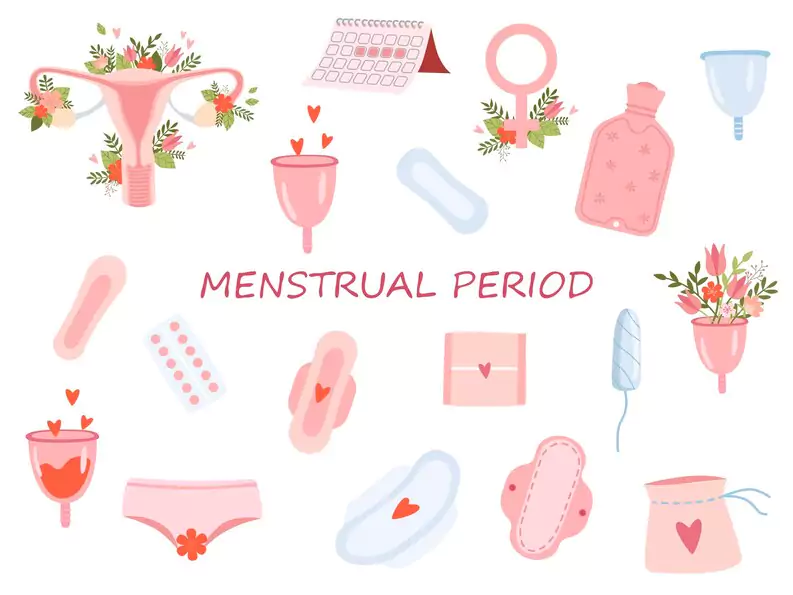
Alternative menstrual hygiene products, such as reusable pads or menstrual cups, offer an eco-friendly and economical option. Unlike disposable pads, these products need to be washed after each use.
Exploring Eco-Friendly Options:
- There are several alternative menstrual hygiene products available that are both eco-friendly and safe to use.
- These products not only offer sustainable options for managing your period but also provide a range of benefits for your health and the environment.
- Here are a few popular eco-friendly menstrual products to consider:
- Menstrual cups:
- Menstrual cups are made of medical-grade silicone and can be reused for up to 10 years.
- They are inserted into the vagina, creating a reliable seal to collect menstrual flow.
- Cups can hold more liquid than pads or tampons, offering longer protection and fewer changes throughout the day.
- They are sustainable, cost-effective, and reduce waste compared to disposable alternatives.
- Cloth pads:
- Cloth pads are reusable pads made from soft, absorbent fabric materials.
- These pads are washable and can be used for several years, reducing waste from disposable pads.
- They are comfortable, and breathable, and come in various sizes and absorbency levels.
- Using cloth pads also helps to avoid potential exposure to chemicals found in disposable pads.
- Period underwear:
- Period underwear is specially designed to absorb menstrual flow without the need for additional products.
- It features multiple layers of absorbent fabric that prevent leaks.
- These underwear can be washed and reused, reducing waste and saving money in the long run.
- They provide comfort, security, and convenience during your period.
- Organic disposable pads and tampons:
- If you prefer disposable options, you can choose organic pads and tampons.
- Organic menstrual products are made from natural, non-toxic materials that are gentle on your body and the environment.
- These products are free from chemicals, fragrances, and chlorine bleach often found in conventional pads and tampons.
- They are biodegradable or compostable, reducing their impact on landfills.
- Sea sponge tampons:
- Sea sponge tampons are natural and reusable alternatives to conventional tampons.
- They are made from real sea sponges that are sustainably harvested.
- These tampons can be washed and reused for multiple menstrual cycles.
- Sea sponge tampons are gentle, flexible, and hypoallergenic, making them suitable for those with sensitivities or allergies.
By exploring these eco-friendly options, you can choose the menstrual hygiene products that best suit your needs while contributing to a greener and more sustainable future.
Frequently Asked Questions Of Do We Need To Wash Sanitary Pads After Use
Should I Wash My Pad After Use?
Yes, it is recommended to wash your pad after use to maintain hygiene and prevent bacteria buildup.
What Should We Do After Using Sanitary Pads?
After using sanitary pads, you should dispose of them properly in a sanitary bin or wrap them in a newspaper before throwing them in the trash.
What Happens If You Don’t Wash Your Pad?
If you don’t wash your pad, it can lead to odor, irritation, and infection.
Should I Change My Pad After Peeing?
Yes, you should change your pad after peeing to maintain hygiene and prevent bacterial growth.
Conclusion
It is evident that washing sanitary pads after use is essential for maintaining hygiene and preventing infections. While disposable pads may seem convenient, they contribute to environmental pollution and should be disposed of properly. On the other hand, reusable cloth pads can be washed and reused, making them a more sustainable option.
By washing the pads thoroughly with soap and water, we can eliminate any potential bacteria or odor, ensuring that they are safe for future use. Proper care and handling of sanitary pads are essential to avoid any discomfort or health issues, so it is crucial to follow the manufacturer’s instructions for cleaning and maintenance.
Overall, making the effort to wash and care for our sanitary pads promotes not only personal well-being but also contributes to a greener and healthier planet.
